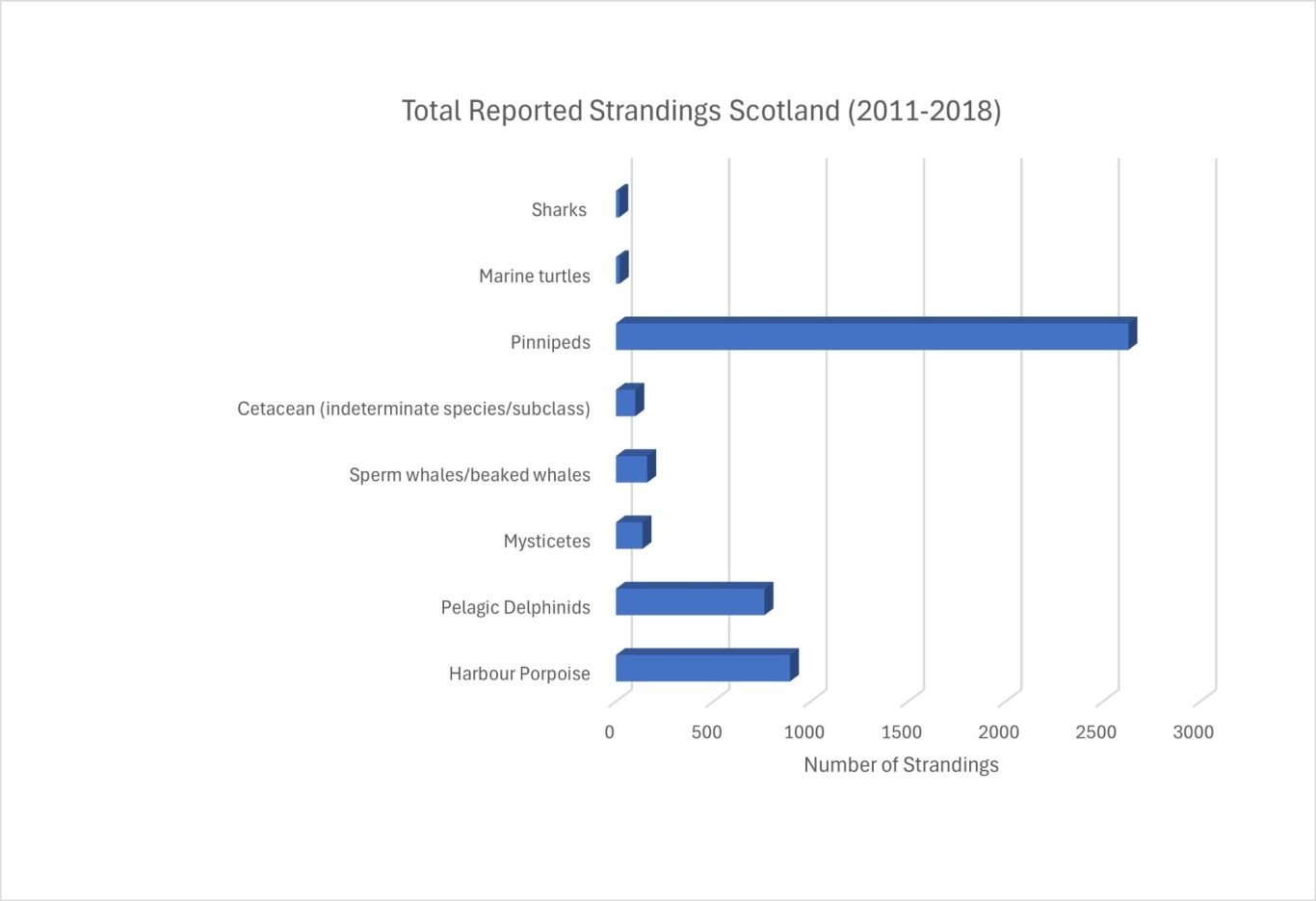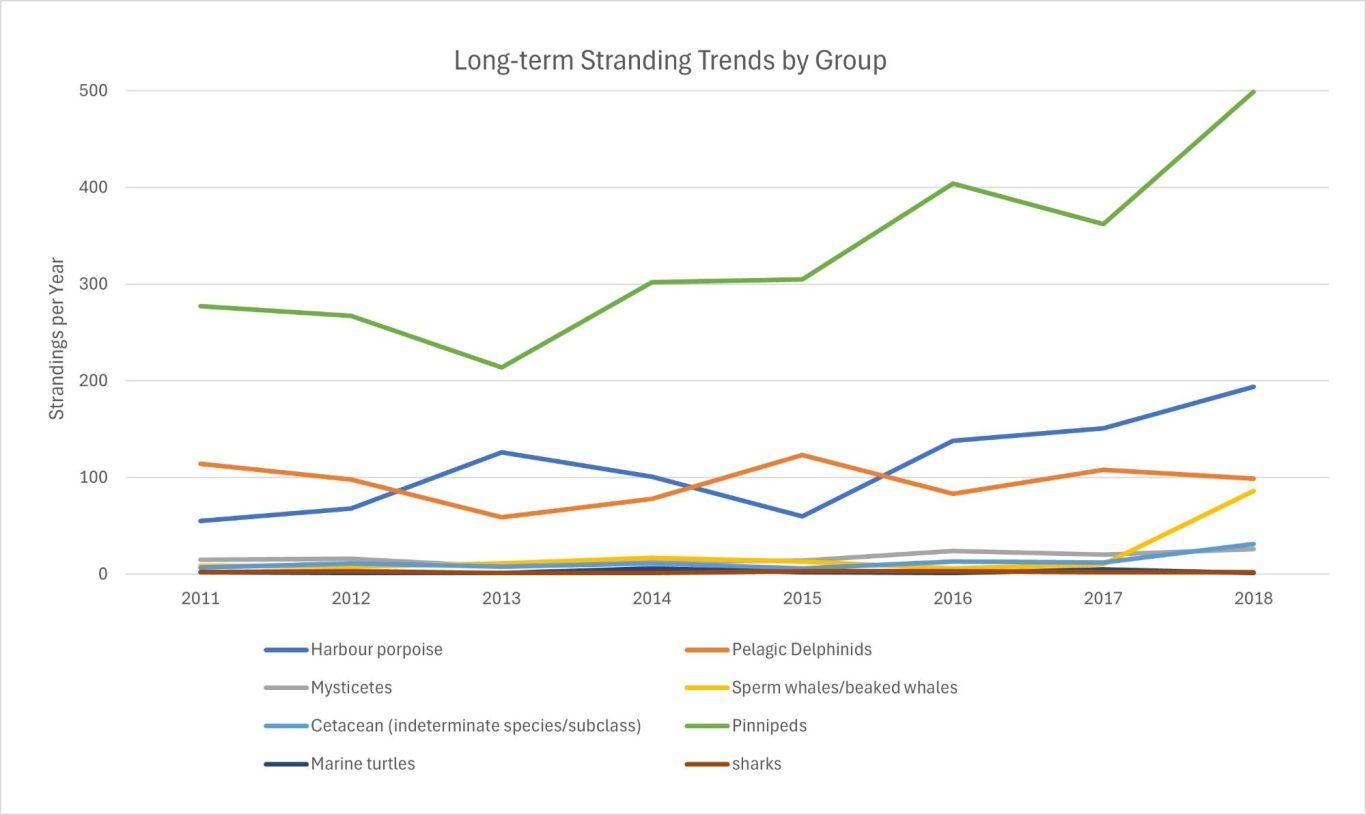Marine Mammal Strandings
Key Findings
- With over 18,500 km of coastline (Scottish Government, 2023), Scotland experiences high numbers of marine animal strandings on its beaches every year. In the last year alone (1st Jan 2023 – 1st Jan 2024) SMASS (2024a) records 931 entries in their stranding database.
- As shown in figure 1, the bulk of recent (find data range) strandings around Scotland have been cetacean and pinniped strandings (SMASS, 2024b). Cetaceans are marine mammals who live entirley in the water, such as whales, dolphins and porpoises, while pinnipeds are marine mammals adapted to both land and sea, like seals, walruses and sea lions (NOAA, 2019). A more detailed species breakdown (fig. 2) reveals the most commonly stranded subclasses to be grey seals, harbour porpoises, pelagic delphinids, and harbour seals (SMASS, 2024b).
- In terms of the East Grampian coastline, it appears that the most commonly stranded subclasses are Harbour Porpoises and Grey Seals. Harbour Porpoises are also common on the South and Southwest coasts, while the Grey Seal range appears most concentrated along the length of Scotland’s east coast. Pelagic Delphinid strandings are more common around the North and West coasts, while Harbour Seals seem concentrated around the Firth of Forth, Moray Firth, and the Firth of Clyde (as in their name).
- The overall trend is that of increasing strandings year on year (fig. 4). Only Marine Turtles and Mysticetes (certain large whale species) shows no substantial increase over the 7-year period. This overall increase is likely the culmination of several factors.
- SMASS highlight that the causes of increasing strandings are highly complex and uncertain. For one thing, the recent increase in public engagement and reporting of strandings has likely contribute significantly to the rising figures (BBC, 2019). Additionally, factors such as wind speed and direction, and species distribution can also play a role (Doeschate, 2024). There is therefore no simple correlation between marine animal deaths and strandings.

Fig 1

Fig 2

Fig 3

Fig 4
Notes
Linked Information Sheets
Key sources of Information
Scottish Government (2023) Facts and figures about Scotland’s sea area
SMASS (2024b) SMASS data
Marine Scotland Assessment (2020) Case study: Scottish Marine Animal Stranding Scheme
BBC (2019) Record year for marine animal strandings in Scotland
‘Stranding of Marine Animals: Effects of Environmental Variables
Reviewed on/by
27/06/24 by Cathryn Lovie
23/06/24 by Ian Hay
Status
First Draft (this is for demonstration only at this time and has not been reviewed)
To report errors, highlight new data, or discuss alternative interpretations, please complete the form below and we will aim to respond to you within 28 days
Contact us
Telephone: 07971149117
E-mail: ian.hay@stateofthecoast.scot
We need your consent to load the translations
We use a third-party service to translate the website content that may collect data about your activity. Please review the details in the privacy policy and accept the service to view the translations.

